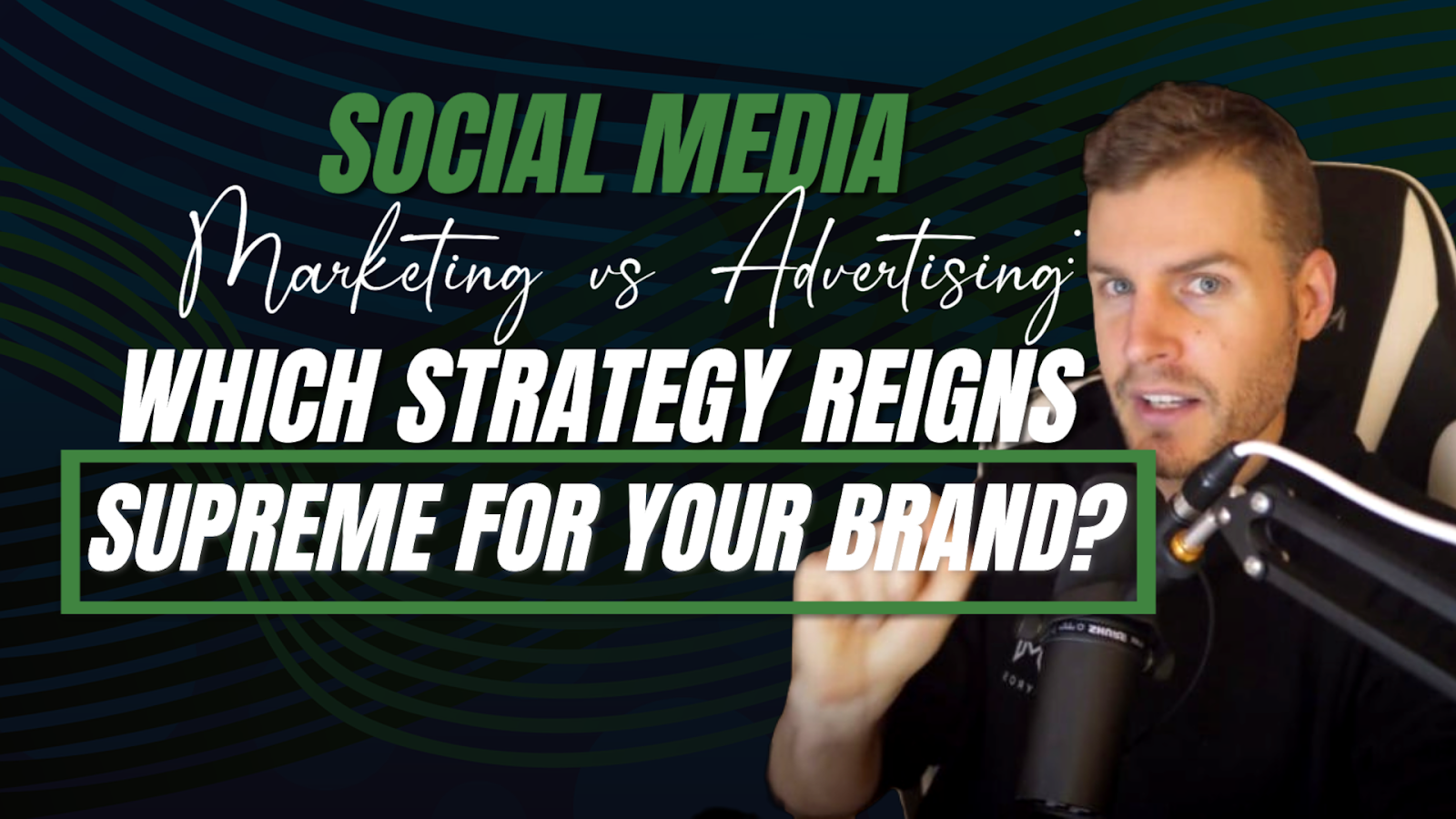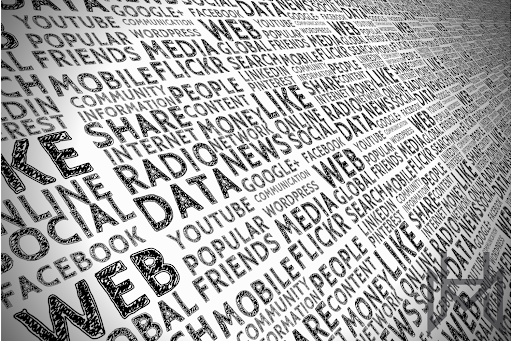
Social Media Marketing vs. Advertising: Which Strategy Reigns Supreme for Your Brand?
Marketing is the cornerstone of any brand’s success, but with so many strategies, it’s hard to know which ones are right for you. Social media marketing and advertising offer powerful advantages for brands, but which offers the best return on your investment? This blog post is here to find out that we’ll compare social media marketing vs. advertising to determine which strategy reigns supreme for your brand.
Social media marketing involves creating campaigns and content that target audiences across platforms such as Facebook, Instagram, Twitter, and Pinterest. Advertising strategies focus on placing paid ads in targeted locations or channels to reach customers directly.
In this blog post, we’ll explore each strategy’s advantages and discuss which provides the highest return on investment. We’ll review various case studies to understand how brands have utilized each approach successfully – then we’ll provide actionable tips so you can confidently choose the right strategy for your own brand
1. Social Media Marketing
Social media marketing is the process of using various social media platforms to promote and market products and services. It has become an increasingly popular and effective method for companies to raise brand awareness, increase customer engagement, and generate leads.
Benefits of social media marketing

Social media marketing is an excellent way to accelerate brand awareness, boost customer engagement and save money. Increasing visibility on platforms like Facebook, Instagram, and Twitter can help you reach a global audience faster than ever before.
Plus, targeted ads mean that you can measure your engagement with ease. You’ll be able to monitor the cost-effectiveness of each campaign and adjust it accordingly for maximum value.
Furthermore, social media gives brands the opportunity to interact with customers in real time. This two-way communication helps build trust and loyalty with existing users and entices new customers too!
Plus, powerful analytics help you measure performance to tweak your campaigns for even better results. You’ll want nothing regarding data – all the insights you could possibly need are right at your fingertips.
Finally, social media marketing effectively adds another layer to content marketing. Establishing thought leadership on different channels leads potential customers down the sales funnel faster than traditional methods.
Different social media platforms

Social media marketing effectively reaches a wide audience, and plenty of platforms are available. Facebook offers the ultimate opportunity to engage with consumers, allowing businesses to stay top-of-mind with comprehensive targeting and accurate measurement tools. Twitter allows users to keep up-to-date with dynamic conversations about their brand or even start new conversations about topics related to their industry.
Instagram is perfect for companies with visual elements in their product or service offerings — easily sharing photos increases the likelihood of earned organic reach. LinkedIn is often overlooked as an option for marketing, but its business connections provide an invaluable resource for meeting potential customers and identifying individuals who could become strong advocates for your brand.
Finally, YouTube allows you to present video content in an entertaining and informative way that leaves a lasting impression on current and potential customers alike. Whatever social media platform you choose, the key is creating unique content tailored specifically to each network’s target audience.
Tips to ensure social media marketing success
To ensure that your social media campaigns are successful and effective, it is important to consider the following tips: developing valuable content that resonates with your target audience; engaging with customers through comments and responding quickly; utilizing analytics tools to measure performance; staying up-to-date on trends and updates from the various social media platforms; testing different strategies; and most importantly having consistent updates so that you stay top-of-mind.
2. Advertising
Advertising is a way to promote a product or service. It helps reach the right people at the right time with your desired message.
Benefits of Advertising
Advertising has huge benefits – it can provide a wide reach to customers, target an audience with your message, and immediately impact sales.
With wide reach, advertisers have the potential to capture a large consumer base quickly. This is ideal for businesses trying to introduce a new product or service to the market.
Targeted advertising allows advertisers to zero in on specific groups of people who are more likely to be interested in their products and services.
This ensures that marketers spend their advertising budgets most effectively instead of wasting money on non-targeted ads that don’t engage their intended audience.
Finally, taking advantage of advertising opportunities can immediately yield results by driving immediate sales through promotions or special offers.
Whether you want to get the word out about a new product launch or drum up interest in an existing offering, investing in effective advertising brings quick rewards.
Different Types of Advertising
Print, radio, TV, and digital are all different types of advertising available. Print advertising involves placing ads in newspapers or magazines. Radio ads are typically short audio clips that run between other radio segments. TV ads are usually short videos that appear during commercial breaks in shows. Digital advertising places ads online and connects to potential customers through social media and search engine campaigns. Each advertising type has its advantages, so it’s important to carefully consider which one will best fit your brand and message.
Tips for effective advertising

To be effective in advertising, one must understand the target audience. Knowing who you’re trying to reach out to is the key.
Creating a compelling message is essential too. This means crafting a message that resonates with your target audience and is creative enough for them to notice.
Choosing the right platform also matters as it dictates how many people are exposed to your ad and how much of an impression it makes on them. Selecting the proper communication channels will give you maximum reach and potency in your advertising campaign.
Social Media Marketing vs. Advertising
When it comes to social media marketing vs. advertising, both strategies have their advantages and limitations. They are two different marketing forms and rely on different strategies and tactics to promote products and services effectively.
Benefits and Limitations of Social Media Marketing and Advertising
When assessing the benefits and limitations of both, it’s important to remember that one isn’t necessarily better than the other–it just depends on your goals.
1. Social Media Marketing
The most notable benefit of social media marketing is that it can create relationships between a company and its target audience. It allows businesses to build trust by engaging in conversations with potential customers and providing helpful content that resonates with their interests. Social media posts can boost brand awareness and sales with regular product offerings or promotion updates.
On the flip side, some of the limitations of social media marketing include the time commitment required to manage accounts and how quickly posts may become outdated or even unnoticed if they don’t get enough traction.
2. Advertising
Conversely, advertising offers faster, more immediate results because it’s typically focused on creating a sense of urgency while encouraging people to make a purchase immediately. Advertising also offers businesses access to an audience they wouldn’t usually be able to access through other means, making it easier for them to reach out on larger scales.
Some downsides of advertising include having limited control over where ads are placed and higher costs for ad campaigns when targeting specific demographics or locations. Additionally, digital ads have been known to be seen as intrusive at times, which could turn off potential customers.
Which strategy between Social Media Marketing and Advertising is best?
Comparing social media marketing to advertising can be tricky because it truly depends on your brand’s goals, who you are targeting, and how much you have to spend.
If your goals involve creating an emotional connection with a younger audience and target demographic, then strategic Social Media Marketing may be a better decision. For instance, Nike’s successful engagement campaigns drew over 300 million viewers.
Advertising can also effectively elicit the desired reaction from your brand’s target audience, usually more quickly than Social Media Marketing. But this option is pricier and maybe less subtle unless done exceptionally well. Red Bull’s ‘Stratos Project’ connected perfectly with the TV adverts prior to and post-launch of the project.
When deciding which route to take, ensure that you research thoroughly into each strategy and its particular capabilities; you may find one works better than the other depending on your brand’s needs!
Can you use Both?
Social Media Marketing and Advertising can be a powerful combination. Social media marketing helps get the word out about a product or service, while traditional advertising processes give messages validation through their reach. Together, they can build an effective brand awareness campaign to attract customers without breaking the bank.
By combining strategies, businesses of any size can capitalize on the power of targeting with social media while leveraging advertising to produce measurable results. It also allows entrepreneurs to target different audiences through multifaceted campaigns across various channels – from television commercials to digital banner ads – creating unforgettable moments that attract new customers and make loyal fans return for more.
It is worth noting that social media marketing and advertising can complement each other. For instance, you can use social media to promote your advertising campaigns and drive traffic to your website.
In conclusion, there is no silver bullet when it comes to marketing. Yet Businesses that properly combine both Social Media Marketing and Advertising processes will find themselves with a much higher chance at success than those relying exclusively on one or the other.
Conclusion
In conclusion, the world of marketing is constantly shifting and evolving. When it comes to promoting your brand, there is no one-size-fits-all approach that will guarantee success. Depending on your business goals and budgets, you may choose to focus more on developing social media campaigns or investing in traditional advertising channels. Social media marketing provides an excellent platform for connecting with potential customers and engaging with existing ones but it often requires a substantial amount of time and effort from marketers. Advertising primarily centers around monetizing impressions and gaining visibility but it can be costly depending on the desired results.
No matter which route you take, it’s important to carefully weigh the pros and cons before deciding. Consider what adjustments need to be implemented to maximize ROI and create value for your target customers. Ultimately, when done strategically and deliberately, both options can significantly impact your bottom line if strategically employed correctly.
